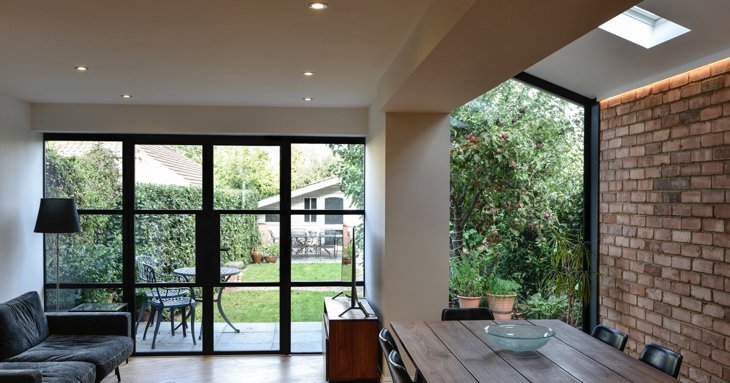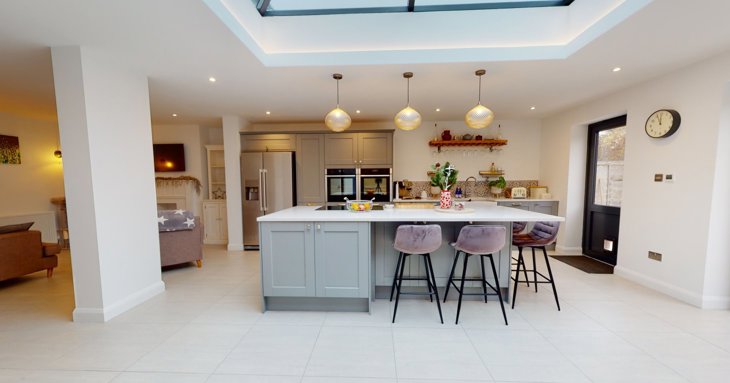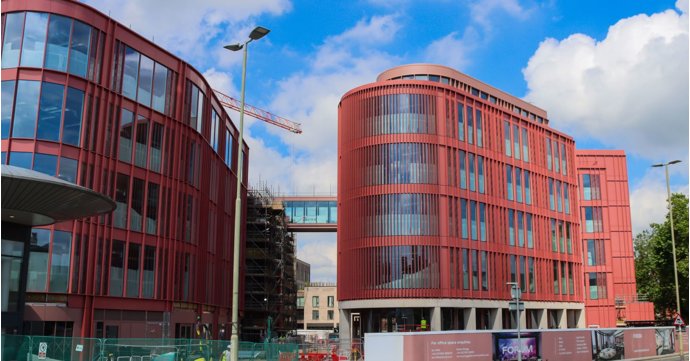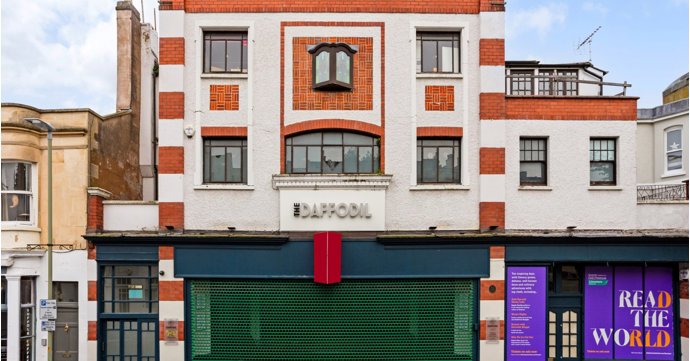One of Gloucestershire's most successful architectural firms with offices across Gloucester, Cheltenham, Ludlow and Hereford, RRA Architects was formed in 1986 and has since developed its award-winning reputation as a highly innovative architectural practice, with work across both commercial and residential sectors.
With the current uncertainty of the property market, SoGlos catches up with managing director and owner of RRA Architects, Mark Powles, as he takes us through the process of falling back in love with your Gloucestershire home, rather than tackling soaring inflation and higher mortgage interest rates when moving.
What are the main benefits of renovating a home instead of moving, both from a financial and lifestyle perspective in 2024?
If you love your current area, but the house isn't quite meeting your needs, renovating or remodelling can be a great choice. In this case, adjusting your home to suit your lifestyle, rather than moving can transform your house to perfectly fit your requirements.
Financially, moving comes with significant costs; legal fees, stamp duty, agent’s fees, porting mortgages or remortgaging — not to mention all the relocation expenses. This is often underestimated but can easily add up to £50,000 or more, especially when you allow for the overlooked costs, for example, packing materials, mail redirection, furniture storage, etc. Also, people often want new furniture for a new house.
That £50,000 could be invested in improving your current home instead and, in a lot of cases, this will even add more value than your initial outlay.
From a lifestyle perspective, moving is stressful. Adapting to a new area and meeting new neighbours can be challenging. If there's the risk that the new location will not be as good as your current one, then making your existing homework for you, can be the better option.
What are the most common reasons that homeowners approach you?
The reasons are very varied. During the pandemic, for instance, many younger people moved from London to Cheltenham, attracted by its reputation as one of the top places to live in the UK. They often had large budgets and were focused on creating homes suitable for a growing family.
Many homeowners come to us because the house layout is not right, but they don’t know how to improve it. They often want a nice, big, family space that combines the kitchen, dining and living areas with easy access to the garden. The traditional house layout usually comprises a series of small, separate rooms that are not well suited to modern day living. We can help create an open-plan family area and improve the house flow for day-to-day life.
Of course, children often need more space or their own rooms, so adding a fourth or fifth bedroom can prevent the client having to move. Also, something as simple as adding an ensuite can relieve the pressure of everyone using one bathroom and hugely improve the functionality of a family home.
These
days, sustainability is a very common concern, even for houses built only 25
years ago. Remodelling offers an opportunity to improve insulation, install
energy efficient windows and doors, even perhaps add alternative heating
methods and PV panels.
Can you talk us through the typical process homeowners can expect when choosing to renovate their home?
Yes, looking at a typical couple: they have two young children, live in a three-bedroom house and it's feeling a bit cramped. They like the house and it is in a good catchment area, but the children are getting older and need their own rooms. The kitchen feels small and disconnected from the living room, and there's no social space leading out to the garden for barbecues and gatherings.
Another common example is adapting a family home for multi-generational living. We are often asked to remodel or extend a property to accommodate an ageing relative.
That's when they decide to call a good architect, like RRA. We visit their home to understand their concerns and what they want to achieve.
We ask them to create a wish list of their ‘must haves’ and ‘like to haves’. From this we work with them to formulate a brief, taking into account their wish list, whilst also discussing needs, lifestyle and rough costs.
We consider whether the project needs planning permission, how long it will take and what the budget is.
We guide them through each step of the process to ensure their home renovation meets their needs and lifestyle.
What sets RRA apart from its competitors?
I can tell you what one of our clients said, apparently, previous architects had walked into the house and told them what they should do with the house. According to the clients, we were the only architects who visited their home and really listened to what they needed and how they wanted to use the space, before coming up with suggestions.
This is really important to a successful outcome because it’s not just about how much floor space you can add, I believe the key is to truly understand our clients’ objective. It may be to simply maximise the value of the property because they are planning to sell up as soon as the children finish school. But more often it’s about understanding the real nuances of family life; are they an ‘outdoorsy’ family who need storage for windsurfers? Or are they party people needing a large social space? We consider everything from storage and future-proofing to where Aunt Betty will stay when she visits from Australia for three weeks. It’s vitally important to fully appreciate the brief, so we can design a home fit for their lifestyle.
Of course, spending time at the start of the project to perfect the scheme for our clients' long-term needs also helps prevent costly last-minute changes and ensures our clients are completely satisfied with the final result.
We are very client focused and genuinely care about what we do and how we deliver the projects. In the domestic market a lot of people are using an architect for the first time, so our extensive experience really helps us guide the clients smoothly through the process.
Can you tell me about any recent renovations you’re proud of, that have helped a homeowner fall back in love with their property?
Absolutely, there's one that really stands out. A couple contacted RRA to ask for an architect to visit a property they wanted to buy. That sale fell through which led us to discussing their existing house. When I visited the property, I was very surprised they were considering moving. They loved their location and the fabulous views, but the house had been poorly extended several times over the years and wasn't laid out correctly. For instance, the staircase was on one end, which made the layout awkward.
After assessing the issues, I suggested moving the staircase to a more central location, which also reduced the amount of wasted corridor space. Additionally, we designed a new office to accommodate their work-from-home needs and created separate spaces for the growing family. When we shared our initial design concepts, they were thrilled and instantly fell in love with the plans.
Now that the work is
finished, they can't believe they ever thought about moving. They already owned
their dream home, and just needed help to realise its potential.
Do most people have an idea already when they come to you?
Some clients come to us with clear ideas, often inspired by shows like Grand Designs or those presented by George Clarke. Some might have even sketched some plans and have a fair idea of what they want. However, most clients just know that their current house doesn’t work for them.
We ask clients to collect images of styles they like, whether contemporary or traditional. And while they think about the look of the property, we prioritise getting the function, size and layout of the building right. Once these are established, we can then adapt the aesthetics of the architecture to suit the client’s style.
How do you address concerns about the disruption and inconvenience associated with renovation projects, and what measures do you take to minimise these impacts on homeowners?
In an ideal scenario, clients would move out during the renovation. However, we understand that paying rent elsewhere while also covering renovation costs can be too much. Some clients can stay with friends or family for a short period, or for larger projects, live in a static caravan on-site.
We generally advise vacating the property, but when that’s not possible, we work with builders experienced in working around occupants. For example, if it's a back extension, we can set up a temporary kitchen and section off parts of the house, allowing clients to live in reasonable comfort during the work.
While there will always be some disruption, a good builder and a well-communicating team can significantly mitigate this. A well-planned renovation programme is crucial. For instance, in a six-month refurbishment and extension, the first couple of months might have minimal disruption. However, when it’s time to knock through to the existing house, there could be more significant disruptions like switching off heating. By maintaining a clear programme and open communication, we ensure clients are fully aware of what to expect.
Lastly, do you have any specific tips for a successful extension or renovation?
Firstly, before starting a project, ask yourself, 'why am I doing this?' If you know you want to stay in your current location, this solidifies your decision to go ahead with the renovation or extension instead of moving.
Next, be realistic about your budget with both yourself and your architect. Many people underestimate costs. For example, clients may come to us with an extensive wish list thinking the cost is around £200,000, when in reality it’s closer to £400,000. It's essential to be honest about how much you're willing to spend.
Additionally, remember that costs go beyond just the build. You need to consider VAT, professional fees and fitting out the new space with carpets, curtains and furniture. After all, you'll likely want new items to complement your new extension, so be realistic about the total costs.
Finally, employ the best team you can — a skilled architect and reliable builders. Don’t just go straight to a builder without checking their experience and standards, as this can be a very costly mistake.
So do your homework and employ good people!

























